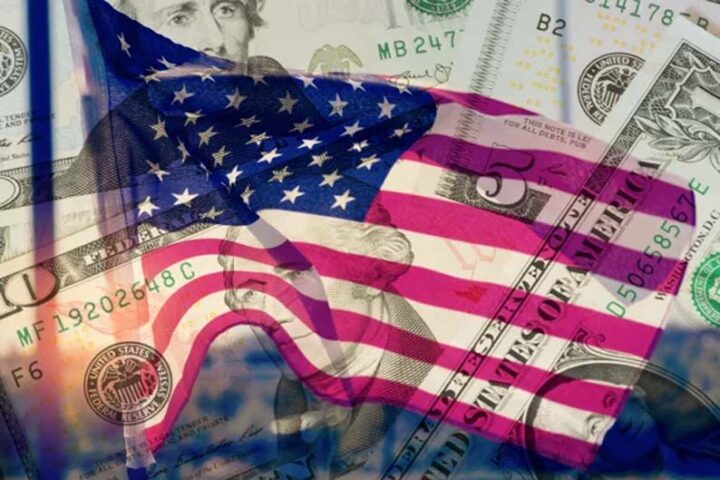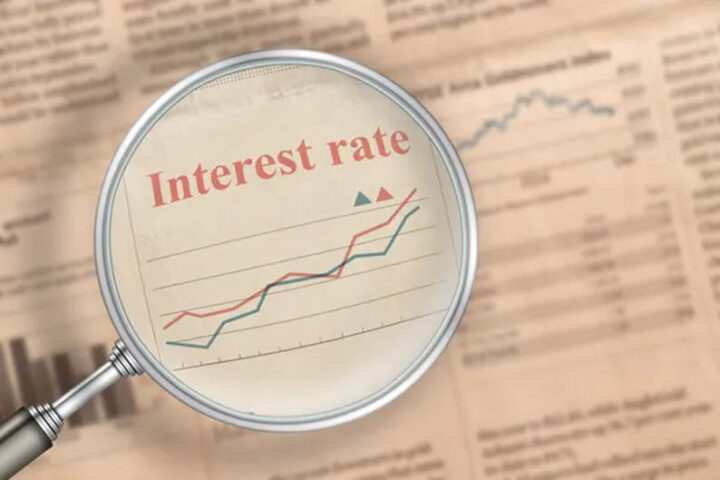By Jeffrey Halley
Mainland China stocks are leading the way higher Wednesday after onflation data showed a benign inflation landscape.
Inflation YoY in April climbed to 2.10% (1.8% exp), and Inflation MoM for April increased by 0.40% (0.20% expected). PPI also eased to 8.0% from 8.30% last month.
Premier Li continues to make noises about the potential for broader economic support, but with China still hell-bent on covid-zero, even if it crushes the economy, and the PBOC showing no signs of loosening the liquidity tap, along with the continuing rhetoric of “targeted stimulus,” there are no signs, yet that China has moved away from its deleveraging stance. Even opening the taps now would be of limited impact if workers can’t leave lockdown to build roads or go back to factories.
That sort of mixed messaging doesn’t do markets any favours, but China isn’t the only one.
The rent-a-crowd of daily US Fed speakers are also a bit “mixed.” We saw some big ranges in stocks and bonds overnight as increasingly frantic markets chase their tails in the grip of recessions and Fed hiking/inflation.
The Fed’s Loretta Mester, on Bloomberg television, didn’t help things by saying “we don’t rule out 75 forever,” meaning 75bps hikes could happen.
US longer-dated yields fell heavily overnight as the Street tentatively priced in “peak-hiking,” but the more rate-sensitive 2-year was unchanged.
The US National Federation of Independent Business (NFIB) survey overnight suggests US inflation isn’t going to fall precipitously soon. The price change and 3-month pricing plan sub-indices were as robust as ever, suggesting cost increases, and the ability to pass them on to consumers is as robust as ever.
That isn’t stopping the US Federal Government, now looking nervously at mid-terms in November, from trying to do something about inflation as diesel and gasoline prices soar. President Biden has hinted a temporary suspension of federal fuel taxes could be on the cards, and he is actively exploring removing the Trump-era tariffs on Chinese goods to push the CPI lower.
That has given US equity futures a leg up. However, even if we may be nearing the top of inflation, that doesn’t mean it will suddenly drop; it could just as easily move sideways for some time.
One risk factor constantly being ignored is the Ukraine war.
Ukraine announced the suspension of west-bound gas exports through a compressor hub, ostensibly because Russia is siphoning the gas to its vassals in Donetsk. It is trying to redirect flows to another interchange that remains under Ukrainian control.
Naturally, Gazprom disagrees, but the threat of disruption to European gas supplies appears to be pushing oil sharply higher in Asia Wednesday, helped along by stimulus hopes from China. All bets are off on inflation if Russian gas gets cut to Europe.
New Zealand announced that it will fully reopen borders in six weeks’ time on July 1. The New Zealand Dollar is 0.25% higher, but that is due to a modest risk-sentiment recovery.
Like everything to do with the Covid recovery by the government and the Reserve Blank, it is too little, too late. AUD/NZD above 1.1000 might encourage some Australian skiers to venture across the Tasman Sea for the winter season, but they’ll be shocked at how many New Zealand Pesos will be required to buy anything.
New Zealand remains my No.1 pick for a hard landing later this year among developed countries, unless Russian gas gets turned off to Europe.
The evening’s highlight will be the US Inflation data. April Core Inflation YoY is expected to ease from 6.50% to 6.0%, with Headline Inflation YoY expected to ease to a still-eye-watering 8.10%.
Expect a binary outcome from the data. Lower prints will see peak-Fed hiking priced in, good for equities and bonds, bad for the US Dollar. Stubbornly high prints see more Fed tightening. Bad for equities and bonds, but good for the US Dollar.
Keep an eye on official US Crude Inventory data as well, particularly the refined gasoline and distillates categories. The US has plenty of oil, but seems to be struggling to refine it into diesel, like the rest of the world. We could see a sharp move higher by WTI if the sub-category’s inventories fall sharply, and it will be another headwind for equities as well.
Bitcoin rollercoaster ride
Finally, cryptos have a volatile session, Bitcoin had an impressive rally intraday before losing much of those gains to finish 3.0% higher at $31,000.00.
BTC failed just ahead of resistance at $33,000.00 overnight, a bearish technical development. Failure of $30,000.00 likely signals the next wave down for Bitcoin which should target $17,000.00 in the weeks, or days, ahead.
I am watching the (un)stable coin situation, with 1 to 1 to the US Dollar pegs breaking in the space. I have warned before that so-called stable coins made me nervous due to the opacity of, do they actually have one US Dollar in reserves for every (un)stable coin issued?
Turmoil here could result in more downward pressure in the cryptocurrency space.
Asian equities are mixed
It was an inconclusive session overnight in New York as recession fears and lower oil prices seemed to weigh on value stocks while the buy-the-dip gnomes piled back into growth as longer-dated US yields headed lower.
The S&P 500 edged 0.25% higher, while the Nasdaq gained 0.98%, but the Dow Jones ended the session 0.26% lower. In Asia, that continued with Nasdaq futures rising 0.75%, S&P 500 futures rising 0.35%, and Dow futures edging 0.23% higher.
Part of the rally in US futures could be explained by China’s stock market outperformance Wednesday.
With inflation data benign, China markets have quickly moved to price in room for heavier China stimulus going forward. That has seen the Shanghai Composite jump higher by 1.63%, the CSI 300 rally by 2.04%, and the Hang Seng gain 1.62%.
The more Nasdaq aligned Nikkei 225 has risen by just 0.12%, but the Kospi slipped 0.20% lower, with Taipei unchanged. Singapore is down by 0.60%, with Kuala Lumpur edging 0.15% higher ahead of the BNM policy decision.
In Australia, the All Ordinaries slipped by 0.12%, and the ASX 200 lost 0.28%. Overall, the picture is one of the markets left to their own devices after an inconclusive US session and a slow headline reel in Asia.
Oil rallies in Asia
Oil prices continued falling overnight as China slowdown nerves and increasingly, US recession fears weighed on prices. In Asia, we have seen a sharp bounce as energy markets price in most China stimulus after benign inflation data, with Ukraine gas disruption likely having a flow-through impact on oil prices.
Overnight, Brent crude finished 3.55% lower at $101.50, and WTI closed 3.45% lower at $99.00 a barrel.
Prices have jumped in Asia with Brent crude rallying by 3.30% to $104.80, and WTI leaping 3.10% higher to $102.05 a barrel.
Brent crude has formed a triple top at $114.75 a barrel, which will be a formidable barrier in the near term. It has support at $101.50. I am sticking to my broader $100.00 to $120.00 wider range ahead for now. WTI has resistance at $111.50, with support at $98.50 a barrel. Once again, I remain comfortable with a $95.00 to $115.00 outlook in the medium term.
Gold looks shaky
Gold’s price action can only be described as negative overnight. Despite lower US yields and a sideways US Dollar, gold fell by 0.84% to $1838.50 an ounce, taking out support at $1850.00. In Asia, gold is unmoved from the New York close with little interest from regional players ahead of US inflation data.
Gold is now just above the triangle apex at $1835.00, the breakout of which in early February, signalled the gold rally to $2060.00 an ounce. A daily close under $1835.00 would be an ominous technical development although it must be said, gold’s recent price action suggested downside risks were in play.
Jeffrey Halley is Senior Market Analyst, Asia Pacific at OANDA
Opinions are the author’s, not necessarily that of OANDA Global Corporation or any of its affiliates, subsidiaries, officers or directors. Leveraged trading is high risk and not suitable for all. Losses can exceed investments.







